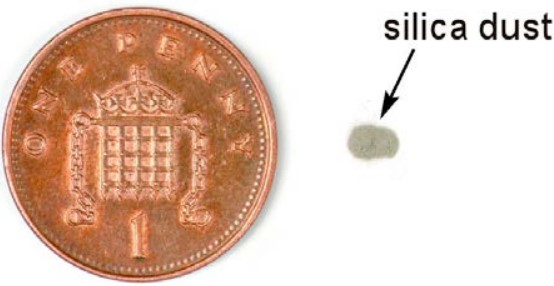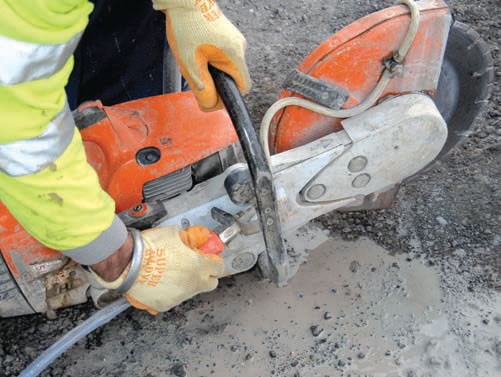Construction work can sometimes produce dusts that can put workers health at risk and cause a number of lung diseases including: Lung Cancers, Silicosis, Chronic Obstructive Pulmonary Disease (COPD) and Asthma. Construction dust is a general term that describes three main types found on a construction site, these are:
- Silica Dust – Created when working on silica-containing materials such as concrete, mortar and sandstone
- Wood Dust – Created when working on softwood, hardwood and wood-based
products like MDF and plywood - Lower Toxicity Dusts – Created when working on materials containing very
little or no silica such as gypsum, limestone, marble and dolomite.

The maximum daily exposure of silica dust.
Although dust-related diseases develop over a long period of time, others, such as advanced silicosis or asthma can develop quite quickly. Over 500 construction workers are believed to die from exposure to silica every year and the amounts needed to cause lung damage are very small. High On tool extraction dusts are caused by one or more of the following:
- Task – The more energy works involve the bigger the risk. Tools which use high energy such as cut off saws, grinders and grit blasters can produce a lot of dust in a short space of time.
- Work Area – Enclosed spaces will cause dust to build up quicker, nevertheless working outdoors does not protect against dust exposure.
- Time and Frequency – work over long periods of time increase exposure, likewise does repeating the task daily.
Dust should be controlled initially by stopping or if not possible reducing its production. For example, using the right size of building material to eliminate or reduce the need for cutting; using less powerful tools, such as a block splitter instead of a cut off saw, will reduce the amount of dust produced; using a different method of work altogether such as direct fastening system. Despite these methods, often dust will still be produced and therefore this needs to be controlled; there are two main methods of doing this:
| Water
Water damps down dust particles. Enough needs to be supplied at the right on tool extractions for the whole time that the work is being done. Wetting the material before use will not suffice. |
 |
| On Tool Extraction
Removes dust as it is produced and consists of the tool, capturing hood, extracting unit and tubing. The extraction units are used to a specific specification (Low, Medium or High-Class filter units). |
 |
Water and Extraction methods may not always be appropriate for the task and do not guarantee all dust exposure is reduced, therefore, respiratory protective equipment (RPE) should be provided for added protection. WA Management produces separate information sheets on RPE that provides in more detail the type that should be used, however, the minimum assigned protection factor (APF) that is required for general construction dust is 20.
Below can be found a table with common dust producing tasks and methods to eliminate, limit or control produced dust:

(References: HSE CIS36, CIS69
Information correct as of 8th February 2019)
